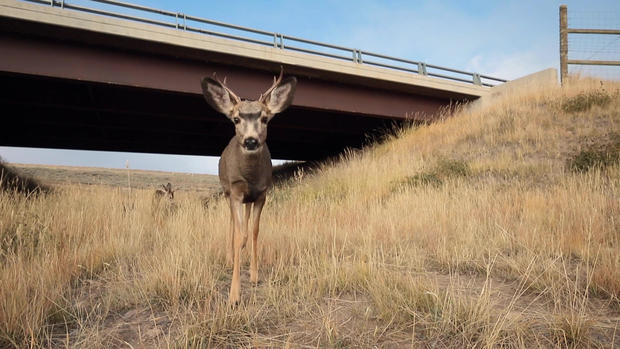
How wildlife crossings protect both animals and people
Interstate 90 is the longest interstate highway in the United States. Spanning more than 3,000 miles, it connects Seattle in the west to Boston in the east. But it also serves as a massive concrete divide. For the animals who live to the north and south of the interstate, this road has absolutely wrecked their commute.
The U.S. Forest Service and the Washington State Department of Transportation have teamed up to develop a network of “critter crossings” in Washington – overpasses and underpasses designed to provide safe passage for wildlife.
The crossing project, with structures at areas identified where animals are likely to cross, spans 15 miles of I-90 near the Snoqualmie Pass in Washington, flanked by large chunks of what’s primarily national forest land – habitat for all sorts of creatures great and small.
a federal grant program awarding a total of $350 million to states looking to build crossings and improve safety.
CBS News
White has already seen a reduction in collisions where the crossings have been built. “If you think about it that way, and you think about how many accidents didn’t happen, these crossing structures pay for themselves pretty fast,” he said.
And fewer road closures mean faster commutes for everyone.
Even though the crossing construction in Los Angeles has meant occasional slowdowns and lane closures, Pratt said the public has been able to stay focused on the benefits down the road.
“Wildlife crossings are something, it doesn’t matter if you’re a Republican or a Democrat, or what political affiliation – people really support them,” she said. “I think there’s very few people who don’t get upset when they see a dead animal on the side of the road. So, I think that this is something that in a time where we agree on very little, we pretty much agree on wildlife crossings.”
CBS News
For more info:
Story produced by Michelle Kessel. Editor: Joseph Frandino.
Source: cbsnews.com
